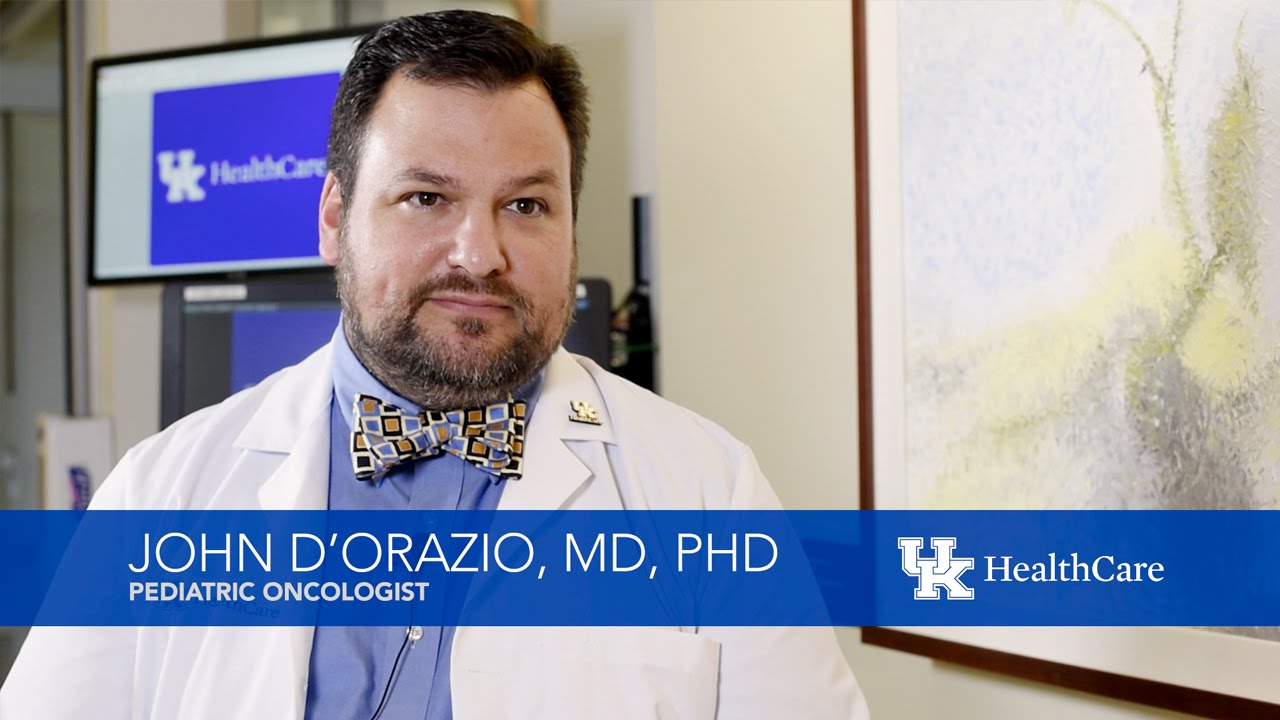
John A. D'Orazio, MD, PhD
John A. D'Orazio, MD, PhD
- Co-Leader, Genomic Instability, Epigenetics and Metabolism
- Regina Drury/Children's Miracle Network Endowed Chair in Pediatric Research

Conditions
- Pediatric cancer
- Cancer - Pediatric
- Pediatric cancers including leukemias, brain tumors and solid tumors such as lymphomas, sarcomas, neuroblastomas, and others
- Hematologic disorders including anemias, thrombocytopenias (low platelet counts), bone marrow failure, and abnormal bleeding/clotting
Procedures Performed
- Bone Marrow Biopsy
- Bone Marrow Aspiration
- Spinal tap (lumbar puncture)
About
Personal Statement
I followed my heart to Pediatric Hematology/Oncology. As the first person in my family to even go to college, I really didn't have personal role models to guide my career choices. Medicine proved to be a wonderful way in which I could fuse my desire to help others while attending to my life-long love of learning. I am a physician scientist, and have an active interest in cancer research, focusing on inherited syndromes that predispose to cancer. My journey to Pediatric Heme/Onc was influenced by the inspirational young people and their families battling cancer and blood diseases. I am honored to be a part of the outstanding team here at Kentucky Children's Hospital that provides care to children and young people with cancers and disorders of the blood.
Faculty Rank
- Professor of Pediatrics
- fixes empty view field issue
Training & Education
Degree
Residency
Fellowship
Certifications and Special Training
Research
Research Focus
Our laboratory focuses on malignant melanoma of the skin, a cancer that kills more than 10,000 Americans every year. Melanoma incidence has increased so much over the last century such that whereas a US citizen in the 1930's had only a 1 in 1,500 chance of developing it, now almost 1 in 50 of us will be diagnosed with the disease. We are interested in the genetic and environmental factors that cause melanomas to develop so that we can design ways to reduce melanoma incidence
Programs
Molecular and Cellular OncologyCollege & Department
Contact Information
Combs Cancer Research Bldg. Rm. 204
800 Rose Street
Lexington, KY 40536-0096
United States
Publications
- Sirtuin 1-mediated deacetylation of XPA DNA repair protein enhances its interaction with ATR protein and promotes cAMP-induced DNA repair of UV damage.Jarrett, SG, KM Carter, R-M Bautista, D He, C. Wang and JA D’Orazio. J Biol Chem, 2018.
- The melanocortin signaling cAMP axis accelerates repair and reduces mutagenesis of platinum-induced DNA damage.Jarrett SG, Carter, KM, Shelton, BJ and D'Orazio JA. Scientific Reports. 2017.
- Divergence of cAMP signaling pathways mediating augmented nucleotide excision repair and pigment induction in melanocytes.Wolf Horrell EM, Jarrett SG, Carter KM, D'Orazio JA. Experimental Dermatology. 2017
- AKAP12 mediates PKA-induced phosphorylation of ATR to enhance nucleotide excision repair.Jarrett SG, Wolf Horrell EM, D'Orazio JA. Nucleic Acids Research. 2016.
- Defining the Contribution of MC1R Physiological Ligands to ATR Phosphorylation at Ser435, a Predictor of DNA Repair in Melanocytes.Jarrett SG, Wolf Horrell EM, Boulanger MC, D'Orazio JA. The Journal of Investigative Dermatology. 2015.
- PKA-mediated phosphorylation of ATR promotes recruitment of XPA to UV-induced DNA damage.Jarrett SG, Wolf Horrell EM, Christian PA, Vanover JC, Boulanger MC, Zou Y, D'Orazio JA. Molecular Cell. 2014.

